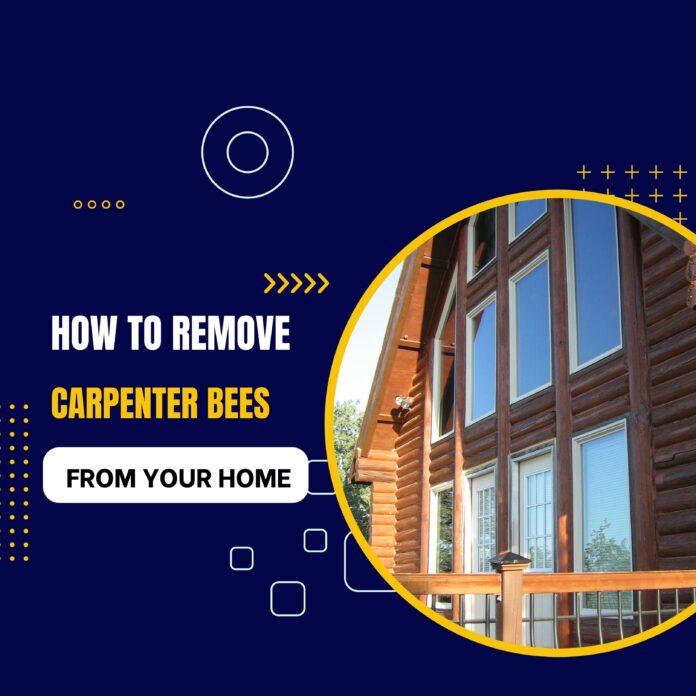When it comes to maintaining your beautiful home, the last thing you want is an uninvited guest buzzing around. Carpenter bees, while fascinating creatures, can be a nuisance when they decide to make your home their nesting ground. In this comprehensive guide, we will share effective techniques and tips on how to safely remove carpenter bees, including insights into the role of the queen carpenter bee, from your home and prevent their return. Additionally, consider professional Carpet Cleaning Services to ensure your home remains pristine.
Enjoy a Bee-Free Home
With the knowledge and strategies outlined in this guide, you’re well equipped to tackle carpenter bee infestations head on and ensure that your home remains a sanctuary of comfort and cleanliness. Say goodbye to buzzing intruders and hello to a peaceful, pest-free living environment.
Understanding Carpenter Bees
Carpenter bees, scientifically known as Xylocopa, are intriguing insects with a penchant for wood. Unlike aggressive yellow jackets or hornets, carpenter bees are generally gentle. However, their nesting habits can pose problems for homeowners. The female carpenter bees bore perfectly round holes into wood to create nests. These holes serve as entry points for future generations, and if left unattended, they can cause structural damage to your home.
Signs of Carpenter Bee Infestation
Before we dive into the removal methods, it’s crucial to recognize the signs of a carpenter bee infestation. Look out for the following indicators:
Round Entry Holes
Small, round holes in wooden surfaces are a telltale sign of carpenter bee activity.
Sawdust Deposits
Carpenter bees don’t consume the wood they excavate; instead, they discard it. Keep an eye out for piles of sawdust or wood shavings near the entry holes.
Buzzing Sounds
If you hear buzzing near wooden structures, it’s a clear sign of nearby carpenter bee activity.
Stains
Carpenter bees can leave yellowish stains on the wood, which result from their excrement.
Effective Removal Techniques
Now that you’ve identified a carpenter bee infestation, it’s time to take action. Here are some tried-and-true methods for safely removing these insects from your home:
Seal Entry Points
Locate the entry holes and seal them with wood putty or caulking. Ensure the material matches the color of the wood for a seamless look. This step will prevent future generations from reusing the holes.
Deterrents
Consider applying deterrents like citrus oil or almond oil to the wood surfaces. Carpenter bees find these scents unappealing and are less likely to nest in treated areas.
Traps
Carpenter bee traps, available at hardware stores, can be effective. These traps attract the bees and capture them, reducing their population around your home.
Professional Pest Control
In severe infestations, it’s best to consult a professional pest control service. They have the expertise and tools to safely remove carpenter bees without harming your home.
Prevention for the Future
Once you’ve removed carpenter bees from your home, it’s essential to prevent their return. Here are some steps you can take:
- Regularly inspect your home’s wooden surfaces for any new entry holes.
- Apply wood finishes and sealants to protect the wood from future infestations.
- Plant bee-repelling flowers and herbs around your property to discourage carpenter bees from nesting.
In conclusion, while carpenter bees may be interesting insects, you don’t want them as uninvited guests in your home. By following the steps outlined in this guide, you can safely and effectively remove these buzzing visitors and safeguard the integrity of your beautiful home. Remember, prevention is key to ensuring a bee-free future.
References
- Boll Weevil Eradication Program by The National Cotton Council
- Carpenter Bee vs. Honey Bee: Differences by beehub.xyz
- Wood Preservation by sciencedirec.com
- Conservation and restoration of wooden furniture by Wikipedia

